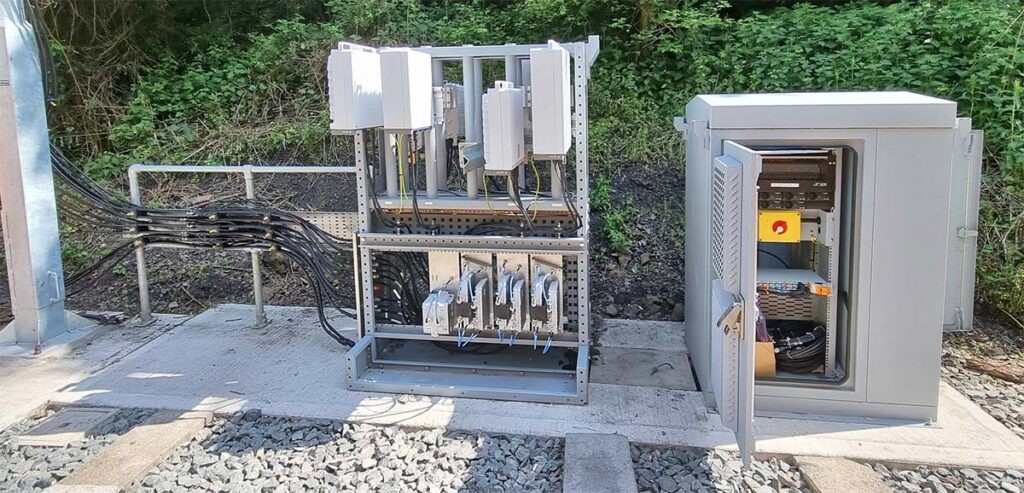
Outdoor telecom racks are designed to protect sensitive telecommunications equipment from harsh environmental conditions. Here’s how they achieve this:
1. Weatherproof Construction
Outdoor telecom racks are typically built with materials that can withstand extreme weather conditions, including rain, snow, wind, and UV exposure. They often feature sealed enclosures to prevent water ingress and are made from corrosion-resistant materials like aluminium or galvanized steel.
2. Temperature Control
Many outdoor racks are equipped with insulation and temperature regulation features such as built-in fans, heating elements, or passive cooling designs. These systems help maintain optimal operating temperatures, protecting equipment from overheating in hot weather and from freezing in cold conditions.
3 . Ventilation Systems
Proper ventilation is crucial in outdoor environments where equipment can generate heat. Outdoor telecom racks are designed with ventilation systems that allow for adequate airflow while preventing dust and debris from entering. This helps ensure that the equipment operates efficiently and reduces the risk of failure.
4. Physical Security
Outdoor telecom racks often come with lockable doors and tamper-resistant features to protect equipment from theft or vandalism. This added layer of security is vital when equipment is located in public or remote areas.
5. Shock and Vibration Resistance
Designed to withstand environmental stresses, outdoor racks often include features that provide shock and vibration resistance. This is especially important for equipment installed in areas prone to earthquakes or heavy winds, ensuring that sensitive components remain stable and operational.
6 .Lightning Protection
Many outdoor telecom racks incorporate grounding systems to protect against electrical surges caused by lightning strikes. This helps safeguard sensitive electronic equipment from damage due to electrical discharges.
7. Dust and Debris Protection
Outdoor environments can expose equipment to dust, dirt, and other debris that can cause malfunctions. Racks often have filters or mesh screens to prevent particles from entering while still allowing airflow, ensuring that equipment remains clean and functional.
8. Modular Design
The modular design of outdoor telecom racks allows for easy configuration and expansion. This adaptability is crucial for evolving network demands and ensures that the equipment can be easily upgraded or replaced without extensive downtime.
9. Standard Compliance
Outdoor telecom racks typically comply with industry standards for environmental resilience (e.g., IP ratings). This ensures that they are tested and proven to withstand specific conditions, giving operators confidence in their performance.
10. Aesthetic Integration
Modern outdoor telecom racks are designed to blend into their surroundings, minimizing visual impact. This can be important for installations in residential areas or natural landscapes, allowing for functional equipment housing without compromising aesthetics.
Conclusion
Outdoor telecom racks are essential for protecting telecommunications equipment from harsh environmental conditions. With features designed for weatherproofing, temperature control, physical security, and resilience against various stresses, these racks ensure that critical communication infrastructure remains operational and reliable, even in challenging settings.

